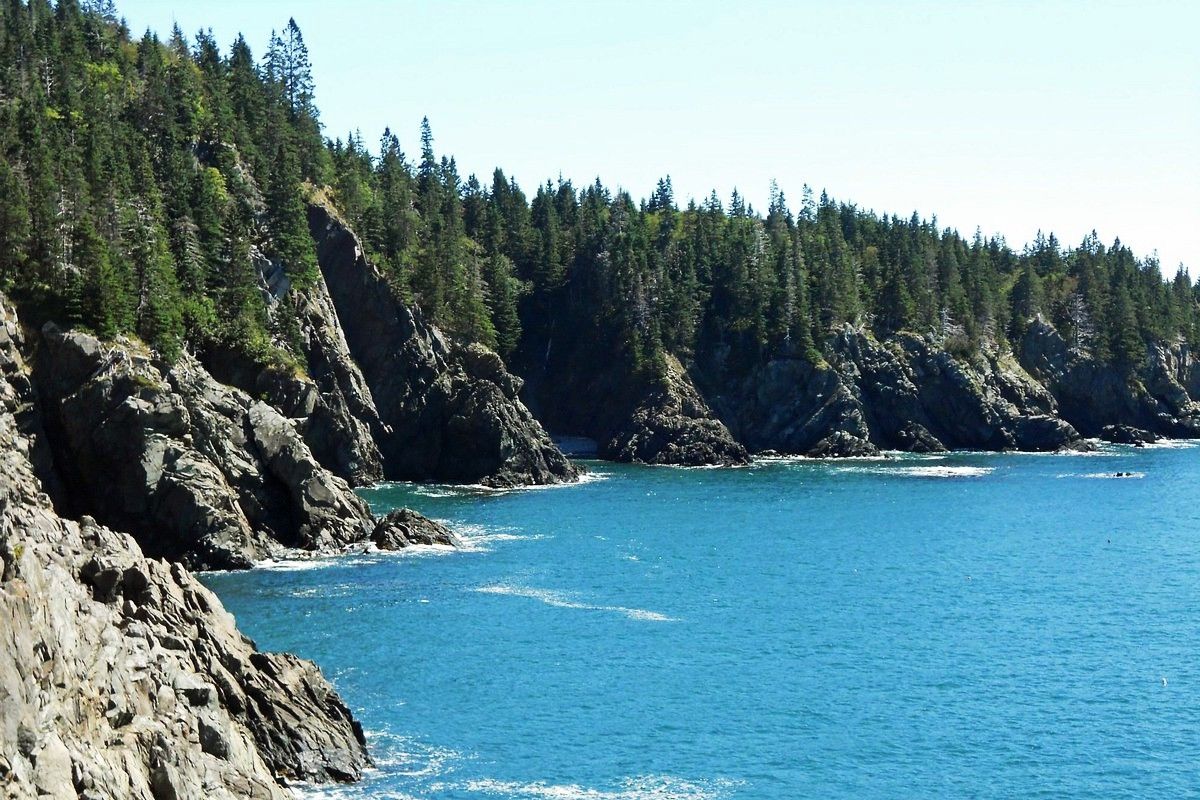Maine’s Bold Coast And Its Lost Signal Fires

Have you ever wondered about the Bold Coast of Maine and its mysterious lost signal fires? This rugged coastline, known for its dramatic cliffs and breathtaking views, hides a fascinating history. Long before modern lighthouses, sailors relied on signal fires to navigate these treacherous waters. These fires, once crucial for safe passage, have now faded into legend. Imagine standing on these ancient cliffs, feeling the same winds that once guided ships to safety. The Bold Coast offers more than just stunning scenery; it holds stories of bravery, survival, and the relentless power of nature. Ready to uncover the secrets of Maine's Bold Coast?
Maine's Bold Coast: A Journey Through Time
Maine's Bold Coast offers a rugged, breathtaking landscape that has captivated explorers for centuries. The coastline, with its dramatic cliffs and serene beaches, is steeped in history. Among the most intriguing aspects of this region are the lost signal fires that once guided sailors safely to shore. Let's explore some of these fascinating locations.
1. Quoddy Head State Park
Quoddy Head State Park, located at the easternmost point of the United States, is a place of stunning beauty and historical significance. The park's lighthouse, West Quoddy Head Light, has been a beacon for mariners since 1808.
- West Quoddy Head Light: This iconic lighthouse once had signal fires that guided ships through the foggy waters of the Bay of Fundy. The lighthouse itself is a striking red-and-white striped structure that stands as a testament to the area's maritime heritage.
2. Cutler Coast Public Reserved Land
Cutler Coast Public Reserved Land offers a glimpse into Maine's wild, untouched beauty. This area, with its rugged cliffs and dense forests, was once home to signal fires that warned sailors of the treacherous coastline.
- Bold Coast Trail: Hike along this trail to experience the dramatic scenery and imagine the signal fires that once blazed here, guiding ships away from danger.
3. Machias Seal Island
Machias Seal Island, a small, rocky outcrop in the Gulf of Maine, is known for its lighthouse and abundant wildlife. The island's lighthouse has been a crucial navigational aid for over a century.
- Machias Seal Island Light: This lighthouse, still operational today, once used signal fires to help ships navigate the foggy and perilous waters surrounding the island.
4. Moose Peak Light
Moose Peak Light, located on Mistake Island, is another historic lighthouse that played a vital role in maritime navigation. The island's remote location made it a perfect spot for signal fires.
- Moose Peak Light: The lighthouse, built in 1826, once had signal fires that warned ships of the rocky shoals nearby. Today, the lighthouse stands as a reminder of the area's rich maritime history.
5. Petit Manan Island
Petit Manan Island, part of the Maine Coastal Islands National Wildlife Refuge, is home to one of Maine's tallest lighthouses. The island's lighthouse and signal fires were essential for guiding ships through the often treacherous waters of the Gulf of Maine.
- Petit Manan Light: This towering lighthouse, built in 1855, once had signal fires that helped sailors navigate the foggy and dangerous waters around the island.
6. Libby Island Light
Libby Island Light, located off the coast of Machias, is one of Maine's oldest lighthouses. The island's remote location made it a crucial site for signal fires.
- Libby Island Light: Established in 1817, this lighthouse once used signal fires to guide ships safely through the rocky waters of Machias Bay. The lighthouse remains a symbol of the area's maritime heritage.
7. Great Wass Island
Great Wass Island, part of the Great Wass Archipelago, offers a unique blend of natural beauty and historical significance. The island's rugged coastline and dense forests were once home to signal fires that warned sailors of the dangerous waters.
- Great Wass Island Preserve: Explore the preserve's trails and imagine the signal fires that once guided ships safely through the foggy and treacherous waters surrounding the island.
8. Nash Island Light
Nash Island Light, located off the coast of Addison, is another historic lighthouse that played a vital role in maritime navigation. The island's remote location made it a perfect spot for signal fires.
- Nash Island Light: Built in 1838, this lighthouse once had signal fires that warned ships of the rocky shoals nearby. Today, the lighthouse stands as a reminder of the area's rich maritime history.
9. Seguin Island Light
Seguin Island Light, located at the mouth of the Kennebec River, is one of Maine's oldest and most historic lighthouses. The island's lighthouse and signal fires were essential for guiding ships through the often treacherous waters of the Gulf of Maine.
- Seguin Island Light: This towering lighthouse, built in 1795, once had signal fires that helped sailors navigate the foggy and dangerous waters around the island.
Discovering Maine's Bold Coast
Maine's Bold Coast offers a unique blend of natural beauty and historical intrigue. The rugged cliffs, hidden coves, and mysterious signal fires create an unforgettable experience. Exploring this region, you’ll find stunning views, wildlife, and stories of the past. The lost signal fires add a layer of mystery, sparking curiosity about the coast's history. Whether hiking the trails or simply enjoying the scenery, the Bold Coast promises adventure and discovery.
Plan your visit to this remarkable area and immerse yourself in its natural wonders and historical secrets. The Bold Coast is a place where nature and history intertwine, offering a unique escape from the everyday. Don’t miss the chance to explore one of Maine's most captivating landscapes.

